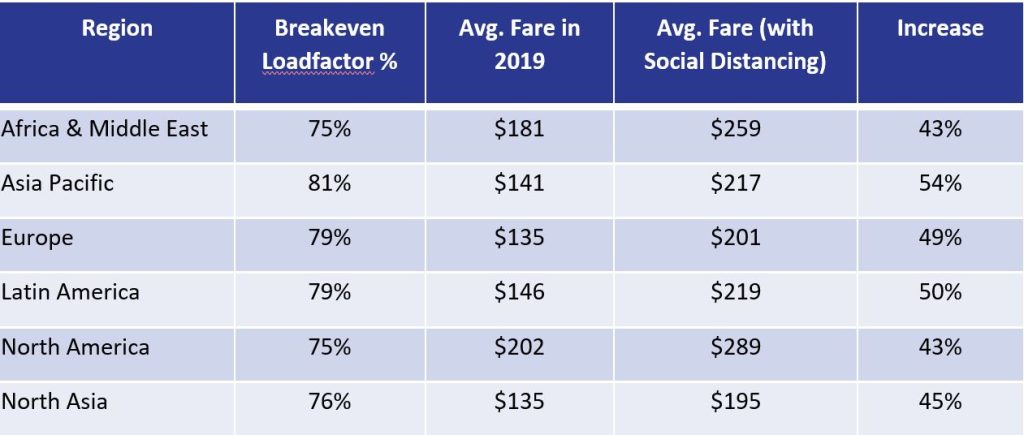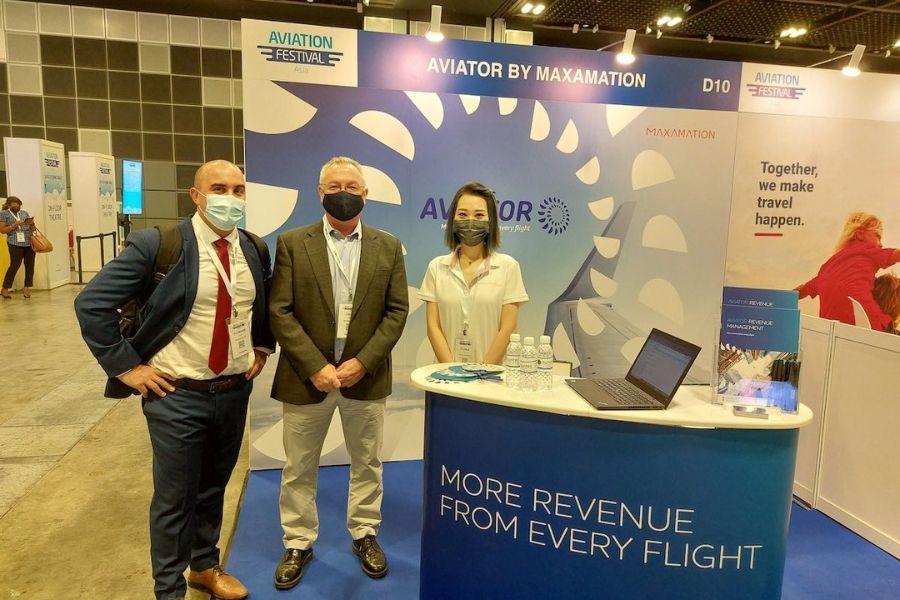Calls for social distancing measures on aircraft would fundamentally shift the economics of aviation by dropping the maximum achievable seat factor to 62% according to IATA. That is well below the 2019 average industry break even seat factor of 77%. Aviator processes can be part of your COVID-19 recovery plan through the application revenue management concepts.
Increases in airfares
It’s widely speculated in the industry that the era of affordable travel will come to an end as airlines have to increase airfares by almost 50% to maintain their current breakeven seat factors. The table below from IATA indicates the % increases in airfares for each region to maintain breakeven seat factors.

I don’t necessarily share that opinion as I believe that effective Revenue Management in airlines will still result in airlines offering a good mixture of premium and reduced fares to the market whilst maintaining profitability, irrespective of the flight’s capacity. To illustrate my point, let’s first understand the 3 gears that drive airline profitability, i.e. costs, yield and seat factor.

Revenue Management for airlines specifically focuses on finding the optimum balance between yield and seat factor to maximise revenues per flight. Being directly responsible for controlling 2 of the 3 gears of airline profitability, Revenue Management in airlines is essential to achieve and maintain profitability.
In the first few months of demand restarting, the consumers will still be cautious to travel and there will be a low Return-to-work & VFR travel to generate sufficient demand. Coupled that with overcapacity in the market and fierce competition, then it’s clear that airlines are finding themselves in turbulent weather.
So, how do airlines manoeuvre themselves during this recovery period to remain profitable?
Airlines must have a robust Revenue Management system and strategy to handle the recovery period. This robust Revenue Management system for airlines must have the flexibility to allow the analyst to influence the forecasting process and to optimise the flights using specific business rules, including competitor optimisation, i.e. optimising a flight based on the pricing strategy of its competitors.
Welcome to Aviator, the ultimate Revenue Management system for airlines.
Aviator provides the analyst with the capability to influence the otherwise automatic Aviator processes – forecasting and optimisation:
- Forecasting: Aviator lets the analyst exclude certain historical date ranges from the forecasting process as well as to map a specific demand curve to a user-selected date period. These are necessary to compensate for extraordinary events (like Covid-19). Aviator also allows the analyst to make certain manual adjustments to forecasted demand based on personal knowledge about market conditions and competitor activity.
- Optimisation: Aviator can optimise flights based on forecasted demand and the application of specific user-defined Business Rules or Aviator can optimise flights based on the pricing strategy of its competitors. This flexibility would allow the airline to apply the appropriate strategy to each departure.
With this symbiotic interaction between Aviator’s forecasting and optimisation processes, airlines can be sure that revenues are automatically maximised for each flight irrespective of market conditions, competitor activity or available capacity. Aviator will ensure that the airline is offering the right price at the right time to the right market to maximise revenues. As our slogan states – more revenues from every flight.






